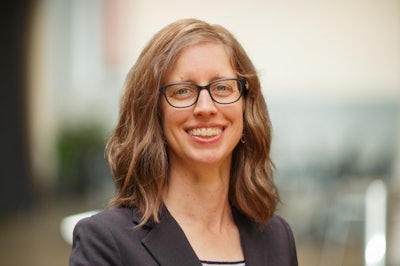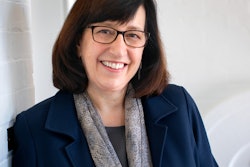When the COVID-19 pandemic forced an abrupt shift to online learning, stakeholders expressed several concerns. Would students really be able to learn as well remotely as they had in-person? Would student engagement suffer? Now, more than three years after higher ed was thrown into upheaval, results are beginning to come in about the shift to online learning. And while student engagement was lower by some measures, by others, it increased.
 Dr. Susan Bickerstaff, a senior research associate at the Community College Research Center at Teachers College, Columbia University
Dr. Susan Bickerstaff, a senior research associate at the Community College Research Center at Teachers College, Columbia University
Overall, online-only students were less likely to collaborate with their peers, with half saying that they never did, compared to only 17% of non-online-only students. They were also less likely to work outside of class with classmates (65% never did, compared to 40% for those who took at least one course in person). Engagement with instructors was also lower, with 45% of online-only students reporting discussing grades or assignments with their teachers, compared to just over half of at least partially in-person students. 58% of online-only students said that they never discussed ideas from readings or classes with instructors outside of class, compared to only 43% of those who didn’t take every class online. Online-only students were also less likely to use support services like tutoring or skill labs and were less likely to have engaged in service-learning activities or field experiences.
These findings were not surprising to Dr. Susan Bickerstaff, a senior research associate at the Community College Research Center at Teachers College, Columbia University.
“Trying to figure out how to have the feeling of connection between student and faculty member and between students, I think it’s just really hard,” she said. “And I don’t think that folks have totally figured that out yet.”
The consequences are clear, according to Dr. Justin Ortagus, an associate professor of higher education administration and policy and the director of the Institute of Higher Education at the University of Florida.
“Whenever student engagement is lower, student outcomes are poorer,” said Ortagus. “They would be more likely to score lower on exams. They’d be more likely to get a lower [final] grade. There’s a connection to being less likely to persist.”
 Linda García, executive director of the Center for Community College Student Engagement
Linda García, executive director of the Center for Community College Student Engagement
“Now there are colleges that are mandating advising. Colleges are making that inescapable,” said García. “When students have a plan, they are more likely to persist. I think we’re moving in the right direction.”
Online-only students were also less likely to skip class than those who learned in-person (a 23-percentage-point difference) and were less likely to come unprepared (a 21-percentage-point difference). This finding may relate to key differences in the populations of students that take online classes exclusively and those who take some courses in person: those who were online-only were more likely to be a non-traditional age, twice as likely to be married, more likely to be female, and more likely to be a part-time student. Almost half work 30 or more hours a week, and 39% have children living with them. These students have competing responsibilities, and the flexibility of online classes allows these students to show up prepared.
“Students say they can just log online really quick,” said García. “They’re not thinking about, well, I have a vehicle, and I’m running out of gas, or I don’t have a vehicle and I don’t have money to take a bus.”
According to García, the research provides an opportunity for colleges to think about how they are supporting their teachers in creating opportunities for interaction with and between students.
“What resources are we presenting [faculty] with to better connect with students? Are we promoting to faculty to schedule time outside the course to meet with individual students to get to know them?” she asked. “The way engagement happens has to be really thoughtful. It’s designing professional development for the faculty, providing spaces where faculty can learn from each other.”
Bickerstaff believes that students also need additional guidance when it comes to getting the most out of online opportunities.
“I think students would benefit from more explicit instruction in how to be successful in online classes,” said Bickerstaff. “A lot of students don’t take advantage of the collaboration opportunities that are optional, but available in a class, for example, discussion boards.”
Ultimately, the research leaves Bickerstaff feeling as she felt before about student engagement with online learning.
“It just suggests we have more work to do in the research and in support for faculty and in the design of online tools to increase the quality of the courses,” she said.
Jon Edelman can be reached at [email protected]














